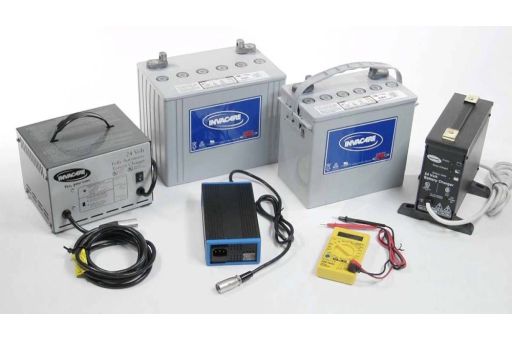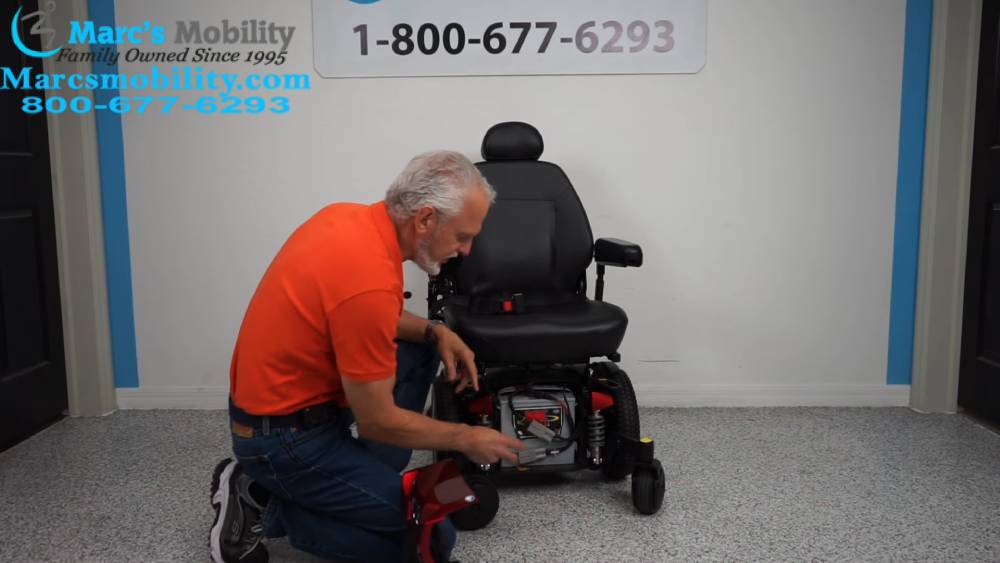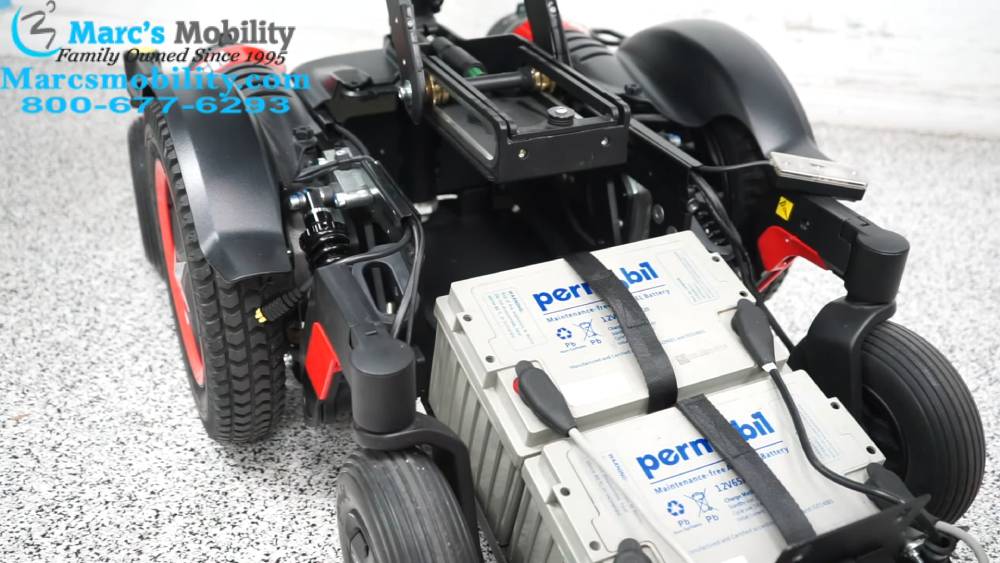
How Long Does an Electric Wheelchair Battery Last?
Power wheelchairs are mobility devices that use battery power to maneuver rather than manual propulsion. This makes them essential independence-enabling tools for many people limited in mobility. A critical factor impacting this independence is the battery life - how long can one expect to use their wheelchair between charges? This depends on various factors relating to wheelchair use and care. Let’s explore typical battery lifespan, what impacts duration, and techniques to extend electric wheelchair battery life.
So, How Long Do Wheelchair Batteries Last on Average?
An average electric wheelchair-sealed lead-acid battery lasts 2-3 years with regular use before requiring replacement. Lithium batteries can live up to 3-5 years. Lifespan mainly depends on battery type, frequency of use, user and wheelchair weight, driving terrain, speed, and exposure to temperature extremes.
Standard batteries allow approximately 10-15 miles of travel between charges. The range then declines over years of deteriorating capacity to hold a stable charge. For full-time wheelchair users, daily travelers may consider upgrading to high-capacity options allowing 20+ miles per charge. Either way, with routine care and maintenance, electric wheelchair users can expect several years of reliable mobility from quality batteries.
Factors Impacting Battery Life
The lifespan of power wheelchair batteries depends heavily on several key usage factors. By understanding how these variables affect battery drainage and longevity, wheelchair users can be aware of maximizing battery life.
The most common wheelchair battery chemistry is the sealed lead-acid (SLA) battery. Less costly than alternatives, these power wheelchair batteries last for 300-500 charge cycles if well maintained. The frequency of usage directly impacts cycle count. Powering mobility over more miles per day and more days per week drag down capacity faster.
The combined weight of the wheelchair and weight of the user matters. Heavier systems require more battery output to maneuver, accelerating wear. For larger riders, choosing a higher voltage system helps compensate for increased power demands.
Driving terrain also influences drainage. Consistently rolling over smooth, flat indoor flooring or sidewalks utilizes basic momentum. But frequent inclines, uneven ground, gravel, grass, and obstacles sap energy reserves quicker. Just 15% slope grades can diminish the range over 50% from the maximum.
Higher average driving speeds exploit more battery reserves mixing repeated acceleration and braking. High speeds also produce more vibrations, gradually damaging connections. Moderate pacing improves consistency.
Extreme hot or cold temperatures degrade all battery chemistries faster through expanded material swelling and contractions. Storing the electric wheelchair and batteries in climate-controlled spaces extends the life of the mobility device.

How to Extend the Battery Life of Power Wheelchair
Properly caring for electric wheelchair batteries is essential for maximizing their lifespan. The optimal charging approach depends on the battery type. Sealed lead acid (SLA) batteries should be partially drained below 50% before recharging. Frequent full discharges shorten the lifespan of SLA batteries. In contrast, lithium-ion batteries tolerate partial charges and frequent top-offs.
During long dormant periods, ensure wheelchair batteries stay connected to automatic trickle chargers, maintaining 35-50% capacity, the optimum storage level. Fully charging and then leaving idle causes gradual self-discharge. Store mobility equipment with batteries installed in temperature-controlled spaces year-round, avoiding exterior temperature extremes.
Check tire inflation routinely, ensuring tires remain firm without dragging for efficient rolling traction on smooth surfaces. Monitor usage in extremely hot or cold external temperatures, which accelerate chemical aging. Limit winter driving range and durations.
By the third year of ownership, consider investing in new replacement batteries to avoid sudden mobility loss as capacities fade. When purchasing replacements, upgrading to modern lithium batteries doubles the lifespan over classic sealed lead-acid. Though costlier initially, their longer warranties justify investment for frequent travelers.
Routinely check voltage levels after charging or invest in smart Bluetooth battery monitors providing detailed metrics on usage rates, temperature impacts, and charging needs. Perform visual inspections and routine maintenance like battery cleaning to maximize functionality.
Practice efficient driving techniques, accelerating and braking gently rather than aggressively overstraining systems. Moderate steady cruising speeds conserve energy over stop-start traffic navigation. Incline avoidance and weight reduction inside carry bags lighten drainage. These responsible usage habits combine to extend reliable mobility by stretching electric wheelchair battery lifespans.

Frequently Asked Questions
When Should You Replace an Electric Wheelchair Battery?
Determining the ideal time for replacement ensures continual usability. After approximately 300-500 charge/drain cycles, sealed lead-acid batteries require retirement. Signs of fading performance include travel range declining 30% or more, sluggish acceleration, inability to hold a stable charge, taking longer to recharge, and lights dimming prematurely. Any visible damage, like cracks or leaks, indicates immediate replacement need.
Industry best practice recommends replacing both batteries simultaneously, not just one. Several replacement options exist – new sealed lead-acid, gel cell, absorbed glass mat, and lithium-ion batteries. Compare the advantages of a longer lifespan or rapid charging when choosing chemistry. Also, consider weight, size fit, and required charger connectors. With routine checking of voltage and usage metrics, you can conveniently plan the optimal replacement timing. Properly recycling old batteries is essential for environmental safety.
Can You Overcharge a Wheelchair Battery?
While it is technically possible to overcharge some battery chemistries, most modern power wheelchair batteries contain smart chargers that prevent overcharging when used properly.
Sealed lead-acid batteries, the most common type in electric wheelchairs, are not in danger of overcharging if left on typical charging equipment once fully replenished. Their internal chemical process does not allow further electrical intake past the saturation point. However, leaving fully charged lead-acid batteries in disconnected storage can lead to gradual self-discharge over weeks, losing effectiveness over time. So, continually charging when not in use does not improve battery capacity or performance.
Can You Revive Dead Electric Wheelchair Batteries?
Attempting to recondition batteries past their usable lifespan poses potential safety hazards and offers limited rewards.
As sealed lead-acid batteries commonly used in electric wheelchairs age past 2-3 years from manufacturing, their internal resistance increases gradually, reducing usable capacity no matter the recharging method. Short-term revival techniques like overcharging to gas thresholds or applying higher voltage levels can perhaps regain short-term function. However, the capacity will drop again rapidly. Such unsafe practices can also overheat components, producing leaks and reliability issues.
Conclusion
Electric wheelchair user independence relates directly to having batteries reliably ready to power mobility at any given moment. By selecting quality batteries appropriately sized for individual use levels, practicing consistent care habits like full recharging and storage best practices, monitoring usage metrics, and properly retiring batteries showing decline, new power wheelchair owners can expect approximately 3-5 years of unpaid lifespan. Newer battery technologies continue advancing one charge capacity for even longer reliability. Maintaining batteries powers independence.

